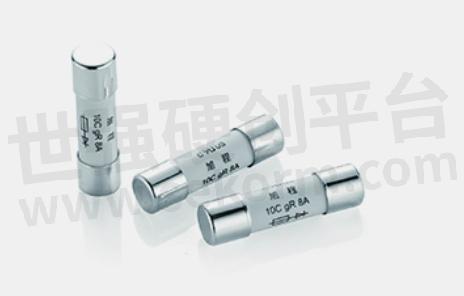Structure of Fuse Holder

The structure of a fuse holder mainly consists of the fuse holder body, base, terminals, pins, etc. Below, we will introduce these structures separately.
The fuse holder body is the main part of the fuse holder, which is usually made of insulating material and can fix the fuse, pins, and terminals. The shape, size, structure, and material selection of the fuse holder body will have a significant impact on the performance and reliability of the fuse holder. The fuse holder body is usually divided into various shapes such as cylindrical, square, rectangular, etc., and different shapes and sizes can be selected according to different application scenarios. In addition, the insulation material of the fuse holder body should have good insulation performance, heat resistance, and chemical corrosion resistance to ensure the safety and reliability of the fuse holder.
The base of a fuse holder is usually made of metal material, used to fix the fuse holder body, pins, and terminals. The material and quality of the base are equally important for the performance and reliability of the fuse holder. Usually, the material of the base should have good conductivity and corrosion resistance to ensure the stability and reliability of the fuse holder.
The terminals of the terminal fuse holder are an important part of connecting wires, usually made of metal materials. The material, structure, and quality of the terminals are equally important for the performance and reliability of the fuse holder. Usually, the material of the terminal should have good conductivity, corrosion resistance, and mechanical strength to ensure the reliability of the fuse holder connection.
The pins of the fuse holder are an important part of the circuit board and are usually made of metal materials. The shape, length, and structure of the pins are equally important for the performance and reliability of the fuse holder. Usually, the shape and length of the pins should be suitable for different application scenarios to ensure the stability and reliability of the fuse holder. In addition, the material of the pins should have good conductivity, corrosion resistance, and mechanical strength to ensure the reliability of the fuse holder connection.

Fig.1
- +1 Like
- Add to Favorites
Recommend
- Wiring Method of Fuse Holder
- Littelfuse Launches 1500 Volt Solar String Fuse and Holder Rated 35 to 60 Amperage
- New Littelfuse 150520 Inline Fuse Holder Series Offers Easier Installation, Saves PC Board Space
- What are the Types of Fuse Boxes
- New Project with Piaggio in India: The New Apé City+ Mounts Fuse Holders of MTA
- Determine if the Fuse is Burning (Fuse)?
- The Difference between Fuses and Fuses
- Guidelines for Selecting Self Restoring Fuses and Disposable Fuses
This document is provided by Sekorm Platform for VIP exclusive service. The copyright is owned by Sekorm. Without authorization, any medias, websites or individual are not allowed to reprint. When authorizing the reprint, the link of www.sekorm.com must be indicated.





























































































































































































































































































































































































































































































































































































































































































































































































































































































